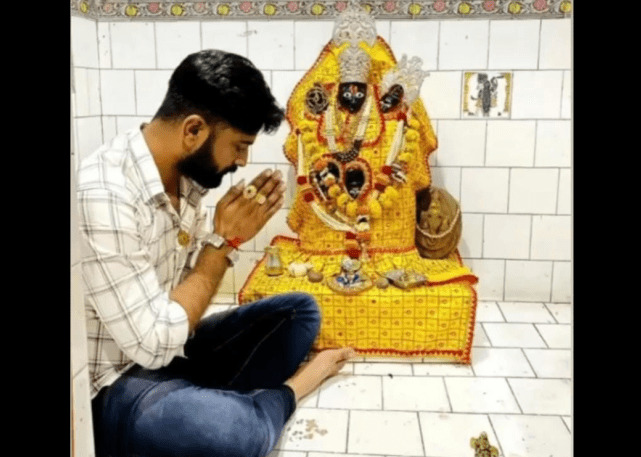Gujarat ’s geography provides it with a certain kind of uniqueness. Gujarat, bordering Pakistan, is a communally sensitive state and there is a high probability of conflicts in the name of religion and national identity. But, zealots do not understand this. The recent killing of a Hindu man by a Muslim has again risked the life of a normal Gujarati.
Kishan Bharwad killed by Islamists
On 25th January 2022, a young man named Kishan Bharwad was killed by two people. According to the police, Kishan was shot dead when he and his cousin Bhaumik Boliya were passing by the Modhwada locality of Dhandhuka town. At around 5:30 PM, two killers approached them on the bike and fired shots. Bhaumik survived while Kishan, the main target died on the spot.
Kishan was on target for a long time before he was finally killed. People aware of the incident have asserted that he was killed because of his social media post. It is being said that Kishan had shared a post on social media which was considered offensive by Islamists.
3 arrested amidst VHP bandh call
Meanwhile, Ahmedabad Police has arrested 3 suspects for the murder of Kishan. Their names are Sabbir Chopda, Maulana Mohammed Ayyub Javrawala and Imtiyaz Pathan. Maulana Mohammed Ayyub Javrawala, 51, a resident of Jamalpur had guided the other two for the crime. According to the police, Ayyub had arranged pistols and cartridges for killing Kishan.
As expected, the killing has resulted in the rise of communal tension in the state. To protest against Kishan’s murder, Vishwa Hindu Parishad (VHP) organised a bandh in Dhandhuka. Talking about the bandh, Hitendrasinh Rajput, VHP spokesperson said, “The call of bandh in Dhandhuka was totally successful. Our senior Gujarat leaders Ashok Raval, Rajesh Patel, Jwalit Mehta and Nalin Patel visited Dhandhuka today and also met the family of deceased Bharwad,”
Gujarat is a hotbed for communal tension
If these religious fanatics had realised the persistent state of communal tensions in Gujarat, they would not have committed this murder. Gujarat is a hotbed for religion-based violence.
Most of the intellectuals only blame PM Modi for the communal tension in the state; however, a quick fact-check discards any such theory. Even before the 2002 Hindu-Muslim riots (for which PM Modi is still demonised by many, in spite of his exoneration), many other riots had engulfed thousands of lives.
Read more: Amit Shah Destroyed the Entire “What About 2002?” Cabal with Just 1 Testimony
Gujarat riots of 1969 and 1985 are rarely discussed in public spaces. More than 1000 people had lost their lives in those riots. Moreover, statistics show that at least 1109 were killed in seven riots before 2002. This huge number accounts for the death toll in only 3 places namely Ahmedabad, Surat and Vadodara. Godhra riots were just an apogee of Hindu-Muslim tensions in the state.
Junagarh and its fallout
Right from the independence, Gujarat as a region is religiously volatile. Though Indian authorities did succeed in having Junagarh on their side, the Hindu-Muslim tension never actually went away. Apart from the above-mentioned riots, the 2006 Vadodara riots and the 2015 Bharuch riots are other prominent ones that come to mind.
Gujarat is the ninth-largest populated state in India. However, the state has at least 40 percent less diversity than the country’s average. In India, Hindus consist of nearly 80 percent, while Muslims comprise nearly 15 percent of the Indian population. However, things are remarkably different in Gujarat.
Read more: ‘Hindu and Muslim patients are being segregated in Ahmedabad,’ cried the liberals. GOT BUSTED
According to 2011 Census, Hindus consist of 88.57 percent of the total population of Gujarat, while Muslims share only 9.6 percent of the population pie chart. The problem of uneven population distribution has been exacerbated by Pakistan supportive religious fanatics in the state.
Read more: A restaurant in Gujarat organised a Pakistan food festival. Bajrang Dal arrived as guests
Mechanism of religious riots
Religious riots are driven by collective madness. See, when you are living in a democratic society, you have to accommodate others. The same holds true for communities.
One community constantly gives space for another in order to ensure a healthy society is formed for their children. However, there is a limit to accommodation. Once that accommodation reaches its threshold, the giver community realises that they have forgotten to take their own space.
Now, they start demanding their own space. If they are not given their deserved rights and constantly blamed for asking, they started to cut themselves from the polity of the state. This phenomenon becomes a precursor to religious tensions manifesting in the form of riots.
If these fanatics had realised the consequences of their actions on their community, they would have never taken violent means to thrust their religion.
